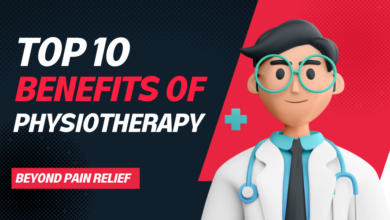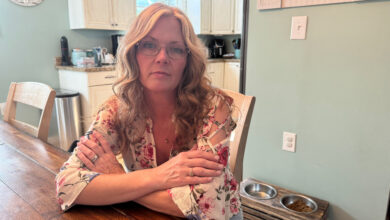
With medical visits picking up again among patients vaccinated against covid-19, health providers are starting to see the consequences of a year of pandemic-delayed preventive and emergency care as they find more advanced cancer and rotting and damaged teeth, among other ailments.
This story also ran on The Washington Post. It can be republished for free.
Dr. Brian Rah, chair of the cardiology department at Montana’s Billings Clinic, was confused in the early days of the covid pandemic. Why the sudden drop in heart attack patients at the Billings Clinic? And why did some who did come arrive hours after first feeling chest pains?
Two patients, both of whom suffered greater heart damage by delaying care, provided what came to be typical answers. One said he was afraid of contracting covid by going to the hospital. The other patient went to the emergency room in the morning, left after finding it too crowded, and then returned that night when he figured there would be fewer patients — and a lower risk of catching covid.
“For a heart attack patient, the first hour is known as the golden hour,” Rah said. After that, the likelihood of death or a lifelong reduction in activities and health increases, he said.
Dr. JP Valin, executive vice president and chief clinical officer at SCL Health of Colorado and Montana, said he is “kept awake at night” by delays in important medical tests. “People put off routine breast examinations, and there are going to be some cancers hiding that are not going to be identified, potentially delaying intervention,” he said.
Valin is also concerned that patients aren’t seeking timely treatment when suffering appendicitis symptoms like abdominal pain, fever and nausea. A burst appendix generally involves more risk and a week’s hospitalization, instead of one day of treatment for those who get care quickly, he said.
Dr. Fola May, a gastroenterologist who is also quality director and a health equity researcher at UCLA Health, worries about the consequences of an 80% to 90% drop in colonoscopies performed by the health system’s doctors during the first months of covid.
“All of a sudden we were downplaying health measures that are usually high-priority, such as trying to prevent diseases like cancer, to manage the pandemic,” May said.
Along with exacerbating existing health problems, the covid pandemic has also caused a host of new medical issues in patients. The American population will be coming out of the pandemic with teeth worn down from grinding, back problems from slouching at makeshift home-work stations and mental health problems from a combination of isolation and being too close to family.
Dr. Despina Markogiannakis, a dentist in Chevy Chase, Maryland, said patients don’t argue when she tells them they have been grinding or clenching their teeth and might require a root canal procedure, dental implant or night guard.
“These are people stuck at home all day and feeling lonely and feeling a little depression. It is induced by the world we live in and all the changes in our lives,” said Markogiannakis.
A recent American Dental Association survey found that more than 70% of member dentists reported an increase in patients grinding or clenching their teeth since covid. More than 60% reported an increase in other stress-related conditions, such as chipped and cracked teeth.
Dr. Gerard Mosby, a Detroit pediatrician, finds his young patients are suffering more stress, depression and weight gain than before the pandemic. They are confined in their homes, and many are living in multigenerational homes or foster homes or have experienced covid illnesses or death among family members.
“Since their ability to get out is limited, they can’t vent to friends or other family members. Also, most will not have access to mental health for grief counseling,” Mosby said.
Nancy Karim, a Bridgeport, Connecticut, licensed professional counselor and art therapist, said that, in addition to struggling with isolation, her patients are conversely stressed by living too closely with people without the benefit of breaks on work and school days.
Meanwhile, optometrist Matthew Jones, who practices in Blytheville and Osceola, Arkansas, reports worsening eye conditions for patients, some of whom stopped taking drops during covid for conditions like glaucoma. He’s also seeing much more eyestrain “because people are spending so much time in front of a computer screen” and recommends eyeglasses that filter out blue light to his patients.

Physical therapy needs are also on the rise.
“Patients that have transitioned to remote work are typically working with poor ergonomic set-ups and spending a lot more time sitting,” said Kaylee Smith, founder and president of Smith Physical Therapy and Performance Studio in San Diego.
“I am seeing more pain and injuries related to poor posture (i.e., neck pain, low back pain, etc.) and a significant increase in patients coming in with tight hips related to increased sitting time,” Smith said in an email.
Some providers report they are finally nearing pre-covid patient levels, but others still face covid resistance.
“Although we have seen an improvement over the past six weeks, it’s still not much,” said Neville Gupta of Gupta Gastro in Brooklyn and Far Rockaway, New York. “Our patients are still avoiding getting the care they need, no matter the safety precautions in place.”
KHN (Kaiser Health News) is a national newsroom that produces in-depth journalism about health issues. Together with Policy Analysis and Polling, KHN is one of the three major operating programs at KFF (Kaiser Family Foundation). KFF is an endowed nonprofit organization providing information on health issues to the nation.
USE OUR CONTENT
This story can be republished for free (details).



